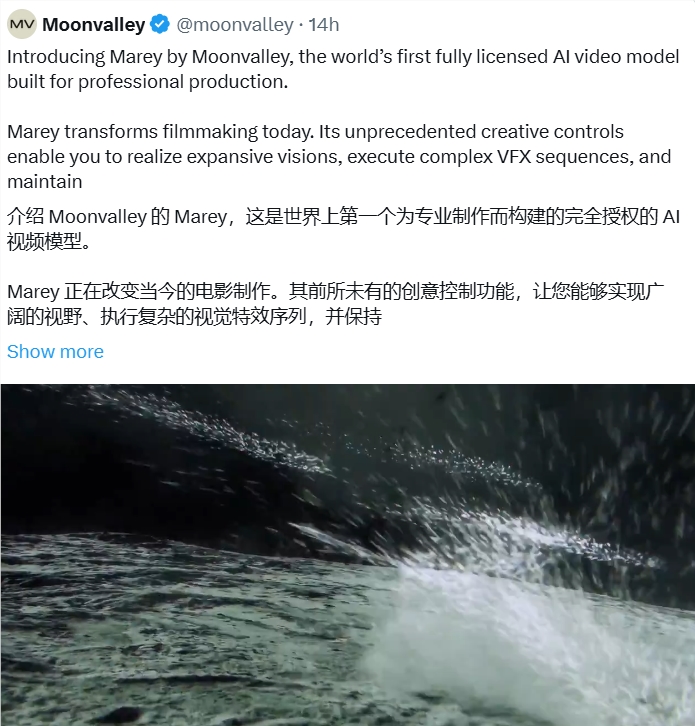With the rapid development of artificial intelligence technology, the AI video generation field has witnessed another major breakthrough. Recently, Moonvalley officially released its new AI video generation model Marey Realism v1.5, and it is fully integrated through the ComfyUI platform. This model, featuring native 1080P high-definition, 100% licensed training data, and powerful creative functions, has quickly sparked industry discussion.
Native 1080P, Visual Quality Upgraded
One of the biggest highlights of Marey Realism v1.5 is its native 1080P video generation capability. Unlike other AI video models that rely on post-processing upscaling, Marey Realism v1.5 is trained directly on high-resolution movie footage, ensuring that each frame displays detailed textures, clear edges, and high contrast without any artifacts or blurring. This "native high-definition" feature gives it a significant advantage in professional film production, advertising creativity, and other fields, providing users with a visual experience close to real filming.

Address: bit.ly/MeetMarey
100% Licensed Data, Zero Copyright Risks
Amid growing copyright disputes over AI model training data, Moonvalley has taken concrete actions to address industry concerns. It is reported that Marey Realism v1.5 is entirely trained on licensed content, with all training data coming from legally authorized video materials, completely eliminating legal risks associated with "web scraping." The release of this "clean" model not only provides filmmakers and brand owners with a safe and reliable creative tool but also sets a benchmark for the sustainable development of the AI industry.
Accurate Interpretation of Complex Prompts, More Creative Freedom
Marey Realism v1.5 excels in its ability to interpret complex text instructions accurately, generating video content that aligns with the creator's intent. Whether it's a complex scene description or a subtle emotional expression, the model can present them with high accuracy. Additionally, it supports both text-to-video and image-to-video generation modes. Users can even upload multiple images as intermediate frames, further enhancing the flexibility and personalization of video generation.
Cinematic Motion and Lighting Effects
The model also shows breakthrough progress in motion and lighting processing. Marey Realism v1.5 can generate smooth and spatially coherent motion, with objects moving with realistic physical properties such as weight, momentum, and a sense of time, closely matching the real world. At the same time, its natural light interaction effects are astonishing, whether it's light refraction on object surfaces or clear depth layering between foreground, midground, and background, making the generated videos have a cinematic feel.
Future Features: Pose and Action Transfer
Moonvalley has not stopped here. According to official announcements, Marey Realism v1.5 will later introduce pose transfer and action transfer node features, allowing users to transfer specific character poses or actions to other objects, greatly improving the efficiency of character animation and motion capture. This added functionality will further meet the needs of professional animators and film production teams.
Industry Impact and Application Prospects
The release of Marey Realism v1.5 not only provides independent filmmakers, advertising creative teams, and large studios with efficient and low-cost creative tools, but also opens up new possibilities for the commercial application of AI video generation technology. Its "zero copyright risk" feature has especially attracted industry attention, potentially encouraging more music video, short film, and brand advertising clients to try using it.
AIbase's Perspective: The release of Marey Realism v1.5 marks a comprehensive upgrade in video quality, creative freedom, and legal compliance in AI video generation technology. By combining technological innovation with ethical practices, Moonvalley has set a new benchmark for the industry. We look forward to this model further empowering creators and promoting the deep integration of AI technology in the film industry in the future.
Conclusion
